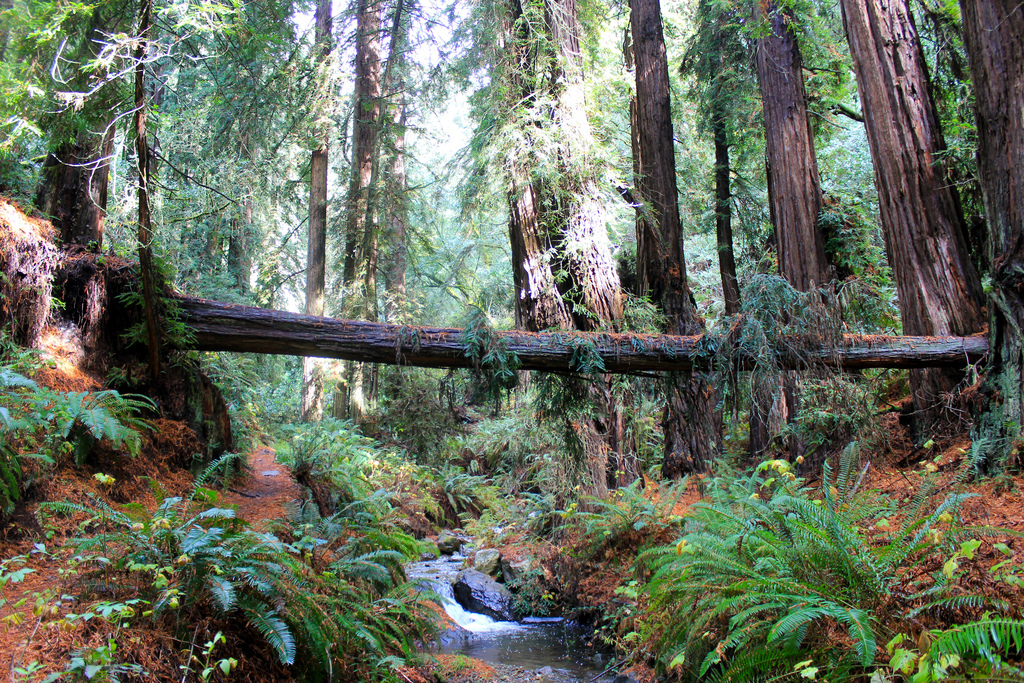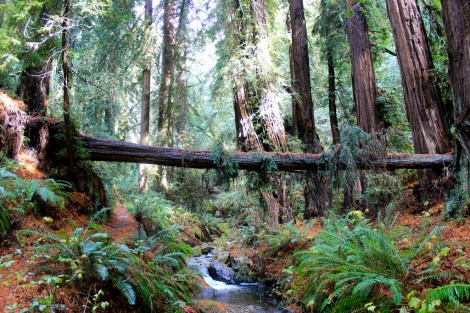True story: My grandmother built her California house entirely from redwood. It’s a really nice house! But it makes me pretty uncomfortable to be inside the place with its massive beams made of ancient, dead trees when we’ve got only 5 percent of old-growth redwood forest left standing today. And as the climate keeps heating up, those trees will be subject to new dangers — and new potential for rebirth further north.
According to new research published in the journal Science, the California redwoods, American pines, Australian mountain ash trees, and other living giants are in danger of being lost forever if we don’t change how we treat them.
Just as large-bodied animals such as elephants, tigers, and cetaceans have declined drastically in many parts of the world, a growing body of evidence suggests that large old trees could be equally imperiled.
The study showed that trees were not only dying en masse in forest fires, but were also perishing at 10 times the normal rate in non-fire years. The study said it appeared to be down to a combination of rapid climate change causing drought and high temperatures, as well as rampant logging and agricultural land clearing.
“It is a very, very disturbing trend,” said Bill Laurance of James Cook University.
“We are talking about the loss of the biggest living organisms on the planet, of the largest flowering plants on the planet, of organisms that play a key role in regulating and enriching our world.”
Large old trees play critical ecological roles, providing nesting or sheltering cavities for up to 30 percent of all birds and animals in some ecosystems.
Some people are now taking action to save the remaining redwoods and repopulate West Coast forests with new-old trees. In Santa Cruz, activists are trying to raise millions to purchase a section of old-growth forest. And this week in Oregon, the Archangel Ancient Tree Archive began planting 250 clones from 28 of California’s biggest, oldest redwoods and sequoias on the southern Oregon coast. From the Associated Press:
David Milarch, co-founder of the Archangel Ancient Tree Archive and the Champion Tree Project, hopes the small plantation south of Port Orford, Ore., will give the ancient giants a leg up on moving north to cooler climes as the climate changes and be the start of a campaign to plant some of the world’s fastest-growing trees all around the globe …
The clones will be planted on Terry Mock’s 150-acre Ocean Mountain Ranch. Mock is a former director of the Champion Tree Project and is turning the ranch into a demonstration of sustainable development. They will go into the ground on the sheltered north slope of a ridge about a mile from the coast near Humbug Mountain. The site is about 40 miles north of the northern tip of the coast redwood’s range, and about 700 miles north of the sequoias in California’s southern Sierra Nevada.
“As things get hotter and drier, redwoods and sequoias should migrate north,” Mock said. “This is a logical spot.”
Another little bit of good news? Until we act like short-sighted jerks and cut them down, it turns out those individual massive trees are still growing. Researchers just found the world’s No. 2 biggest tree has actually been dwarfed by its No. 3 rival, dispelling the notion that big trees grow more slowly as they age.




